|
琳达 版主
  
|
1#
大 中
小 发表于 2018-10-19 18:41 显示全部帖子
Encrypt that SNI: Firefox edition
A couple of weeks ago we announced support for the encrypted Server Name Indication (SNI) TLS extension (ESNI for short). As promised, our friends at Mozilla landed support for ESNI in Firefox Nightly, so you can now browse Cloudflare websites without leaking the plaintext SNI TLS extension to on-path observers (ISPs, coffee-shop owners, firewalls, …). Today we'll show you how to enable it and how to get full marks on our Browsing Experience Security Check.
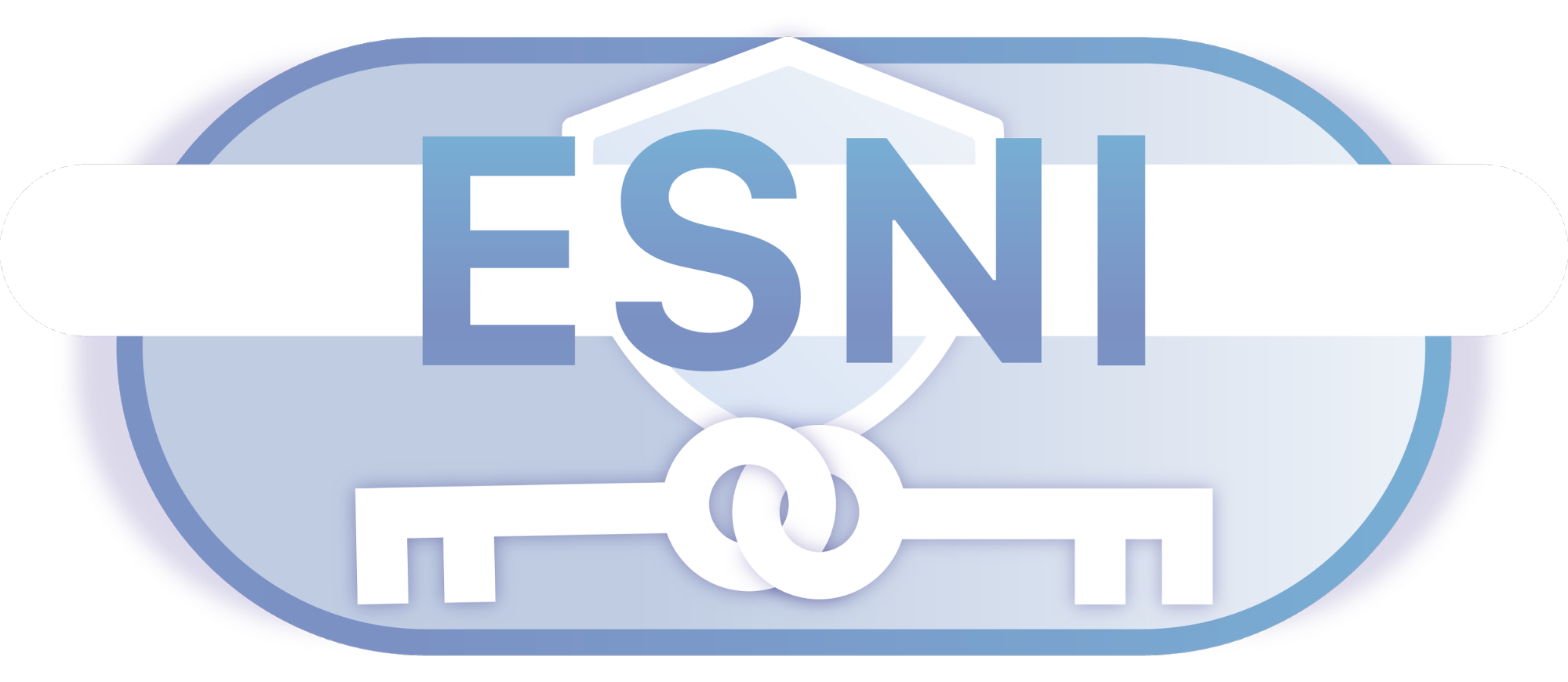
Here comes the nightThe first step is to download and install the very latest Firefox Nightly build, or, if you have Nightly already installed, make sure it’s up to date.
When we announced our support for ESNI we also created a test page you can point your browser to https://encryptedsni.com which checks whether your browser / DNS configuration is providing a more secure browsing experience by using secure DNS transport, DNSSEC validation, TLS 1.3 & ESNI itself when it connects to our test page. Before you make any changes to your Firefox configuration, you might well see a result something like this:
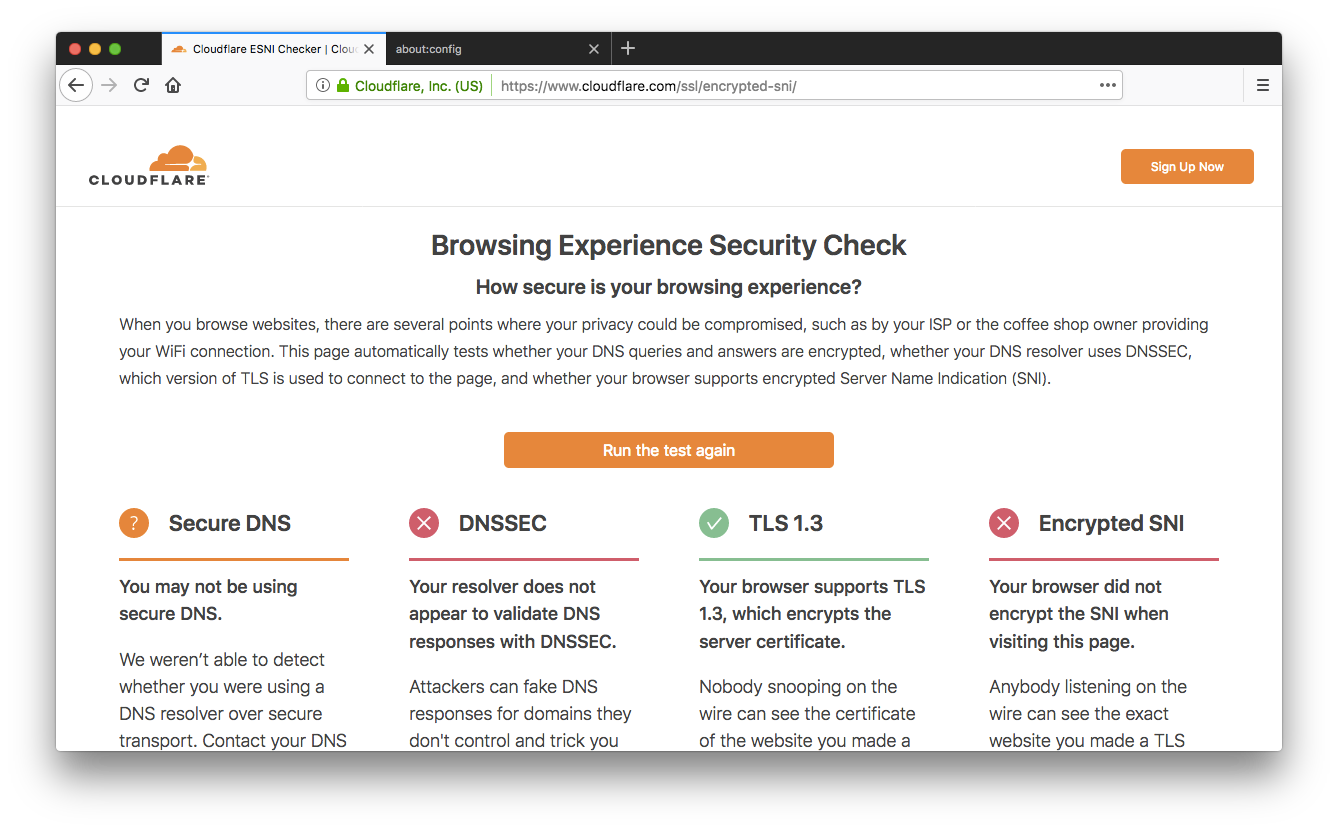
So, room for improvement! Next, head to the [url=about:config]about:config[/url] page and look for the network.security.esni.enabled option (you can type the name in the search box at the top to filter out unrelated options), and switch it to true by double clicking on its value.
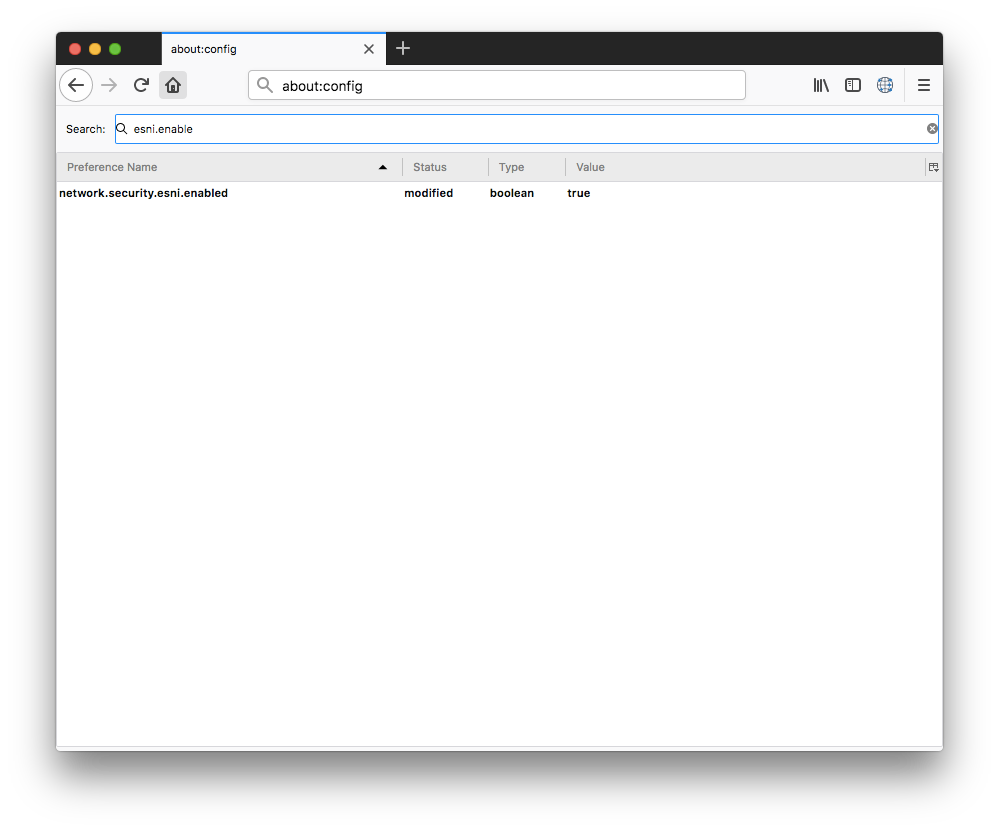
Now encrypted SNI is enabled and will be automatically used when you visit websites that support it (including all websites on Cloudflare).
It’s important to note that, as explained in our blog post, you must also enable support for DNS over HTTPS (also known as “Trusted Recursive Resolver” in Firefox) in order to avoid leaking the websites visited through plaintext DNS queries. To do that with Firefox, you can simply follow the instructions on this page.
Mozilla recommends setting up the Trusted Recursive Resolver in mode “2”, which means that if, for whatever reason, the DNS query to the TRR fails, it will be retried using the system’s DNS resolver. This is good to avoid breaking your web browsing due to DNS misconfigurations, however Firefox will also fallback to the system resolver in case of a failed DNSSEC signature verification, which might affect user’s security and privacy due to the fact that the query will then be retried over plaintext DNS.
This is due to the fact that any DNS failure, including DNSSEC failures, from the DNS resolver is identified by the DNS SERVFAIL return code, which is not granular enough for Firefox to differentiate different failure scenarios. We are looking into options to address this on our 1.1.1.1 resolver, in order to give Firefox and other DNS clients more information on the type of DNS failure experienced to avoid the fallback behaviour when appropriate.
Now that everything is in place, go ahead and visit our Browsing Experience Security Checkpage, and click on the “Check My Browser” button. You should now see results something like this:
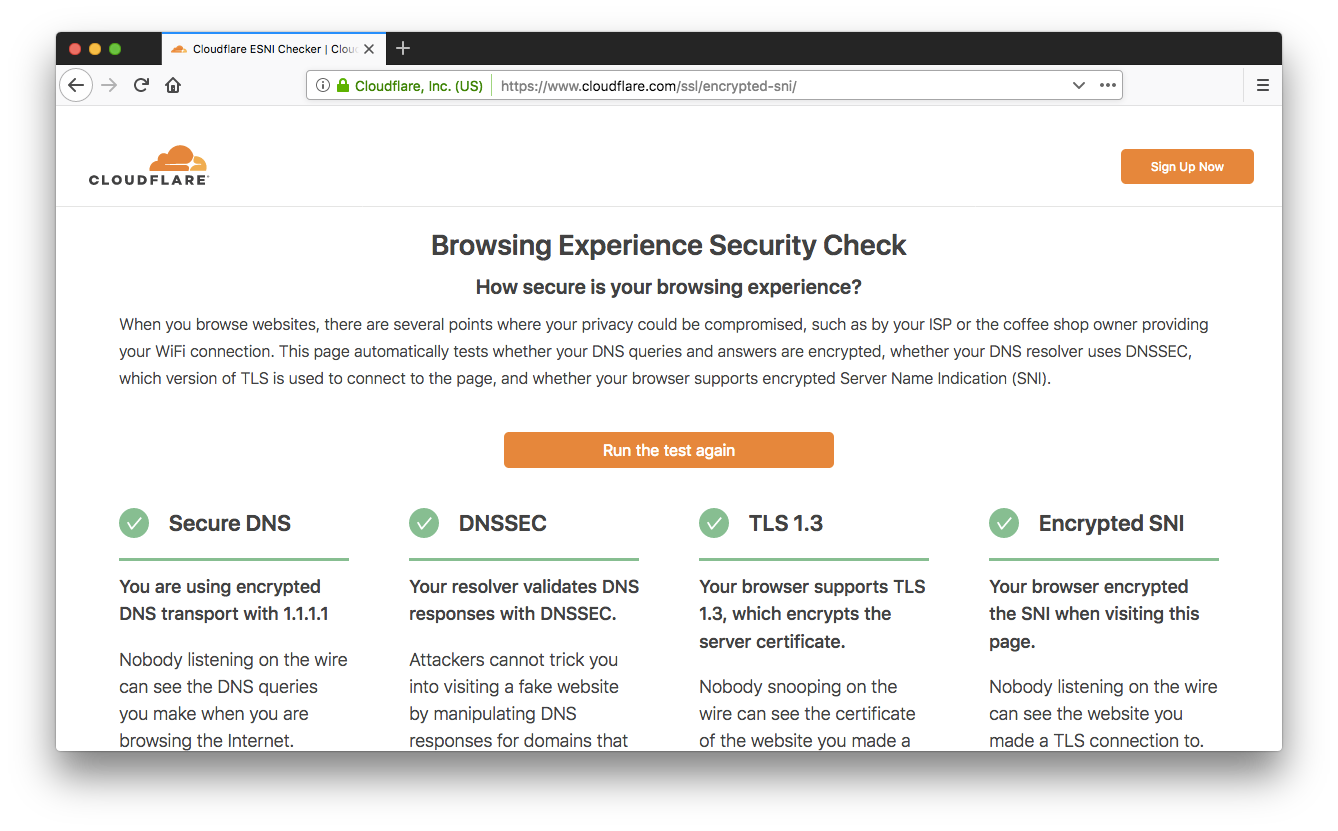
Note: As you make changes in about:config to the ESNI & TRR settings, you will need to hard refresh the check page to ensure a new TLS connection is established. We plan to fix this in a future update.
To test for encrypted SNI support on your Cloudflare domain, you can visit the “/cdn-cgi/trace” page, for example, https://www.cloudflare.com/cdn-cgi/trace (replace www.cloudflare.com with your own domain). If the browser encrypted the SNI you should see sni=encrypted in the trace output.
On the wireYou can also go a step further and download and build the latest Wireshark code from its git repository (this feature hasn’t landed in a stable release yet so building from source is required for now).
This will allow you to see what the encrypted SNI extension looks like on the wire, while you visit a website that supports ESNI (e.g. https://cloudflare.com).
This is how a normal TLS connection looks with a plaintext SNI:
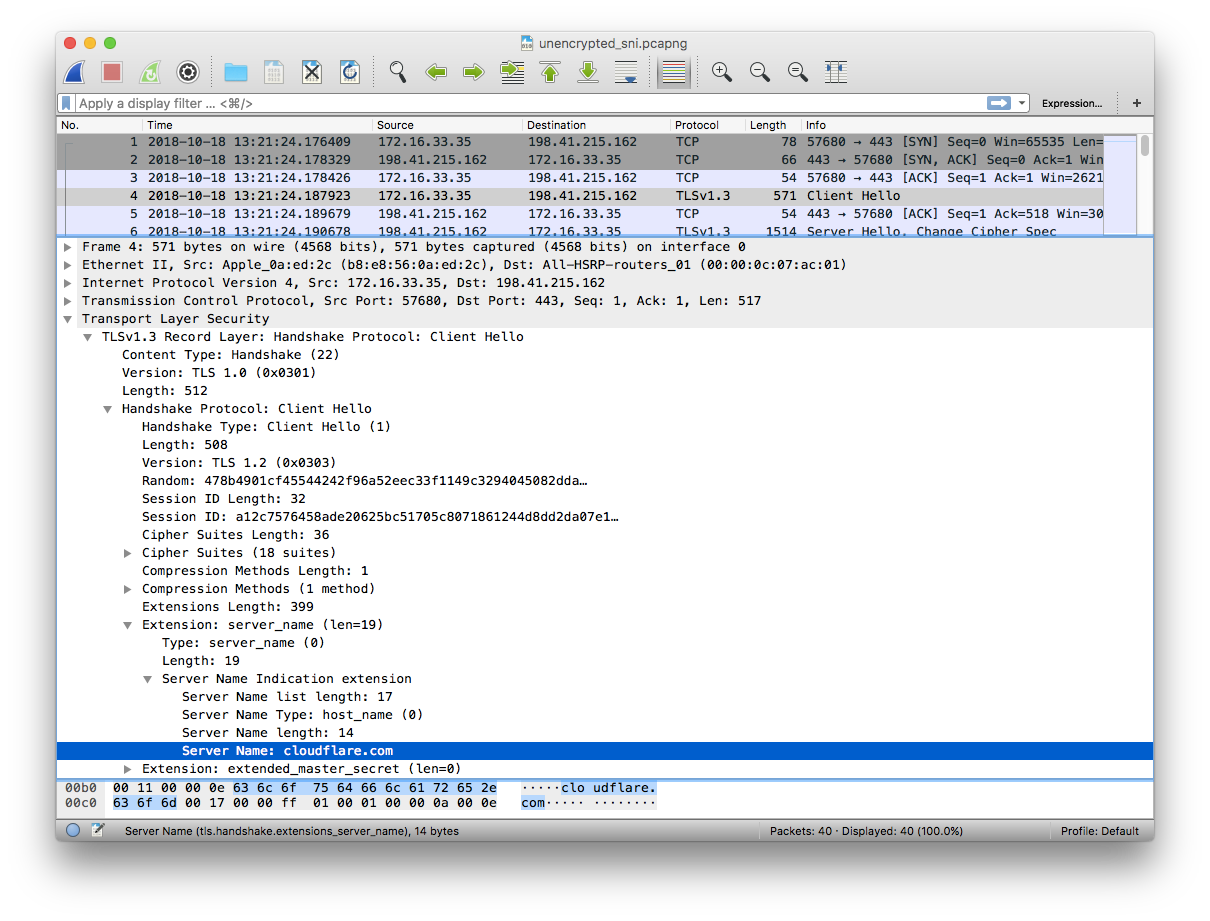
And here it is again, but this time with the encrypted SNI extension:
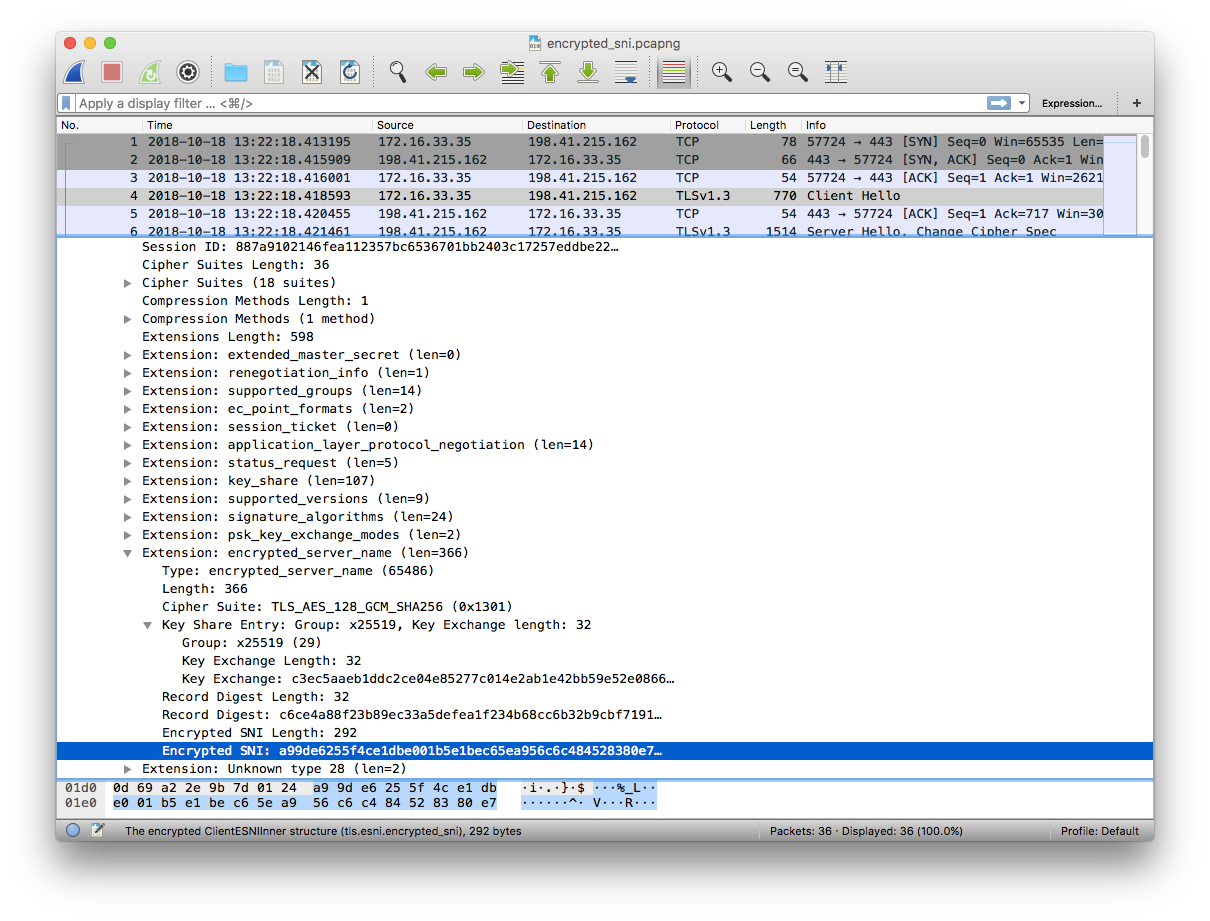
FallbackAs mentioned in our earlier post there may be cases when the DNS record fetched by the client doesn’t match a valid key owned by the TLS server, in which case the connection using ESNI would simply fail to be established.
This might happen for example if the authoritative DNS server and the TLS server somehow get out of sync (for example, the TLS server rotates its own key, but the DNS record is not updated accordingly). But this could also be caused by external parties, for example, a caching DNS resolver that doesn’t properly respect the TTL set by the authoritative server might serve an outdated ESNI record even though the authoritative server is up-to-date. When this happens, Firefox will fail to connect to the website.
The way we work around this problem on the Cloudflare edge network, is to simply make the TLS termination stack keep a list of valid ESNI keys for the past few hours, rather than just the latest and most recent key. This allows the TLS server to decrypt the encrypted SNI sent by a client even if a slightly outdated DNS record was used to produce it. The duration of the lifetime of ESNI keys needs to be balanced between increasing service availability, by keeping as many keys around as possible, and increasing security and forward secrecy of ESNI, which on the contrary requires keeping as few keys as possible.
There is some room for experimentation while the encrypted SNI specification is not finalized yet, and one proposed solution would allow the server to detect the failure and serve a fresh ESNI record to the client which in turn can then try to connect again using the newly received record without having to disable ESNI completely. But while this might seem easy, in practice a lot of things need to be taken into account: the server needs to serve a certificate to the client, so the client can make sure the connection is not being intercepted, but at the same time the server doesn’t know which certificate to serve because it can’t decrypt and inspect the SNI, which introduces the need for some sort of “fallback certificate”. Additionally any such fallback mechanism would inevitably add an additional round-trip to the connection handshake which would negate one of the main performance improvements introduced by TLS 1.3 (that is, shorter handshakes).
ConclusionOn our part, we’ll continue to experiment and evolve our implementation as the specification evolves, to make encrypted SNI work best for our customers and users.
Tagged with Birthday Week, Product News, Cryptography, TLS 1.3, DNS, Security, Privacy, encryptedSNI
原文: https://blog.cloudflare.com/encrypt-that-sni-firefox-edition/
搜索更多相关主题的帖子:
cloudflare SSL https firefox chrome SNI 信息泄露 wireshark 浏览器
|